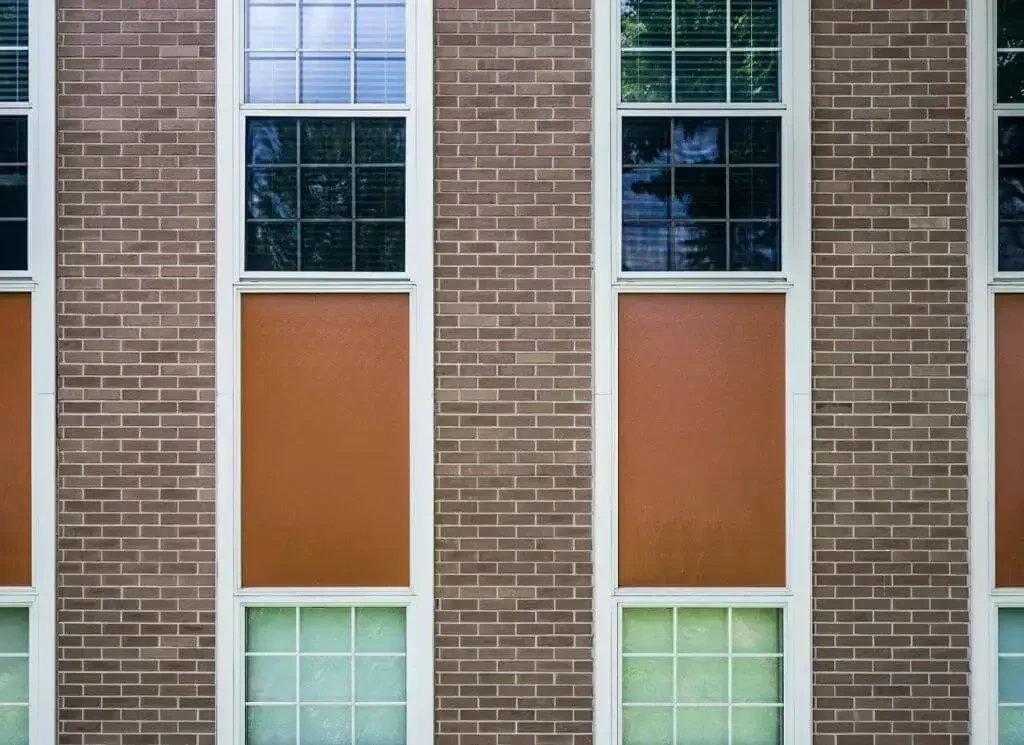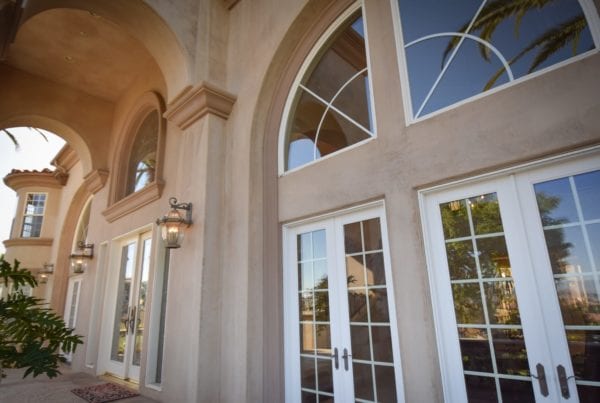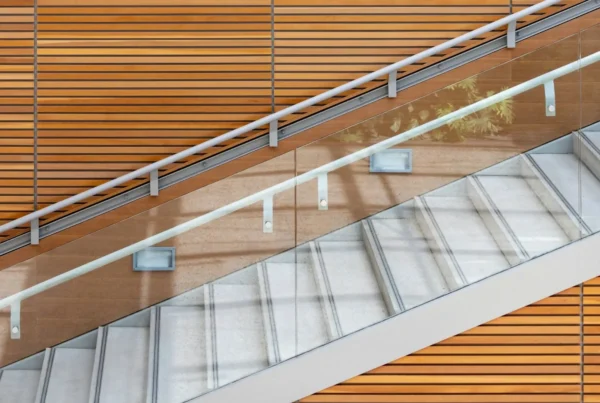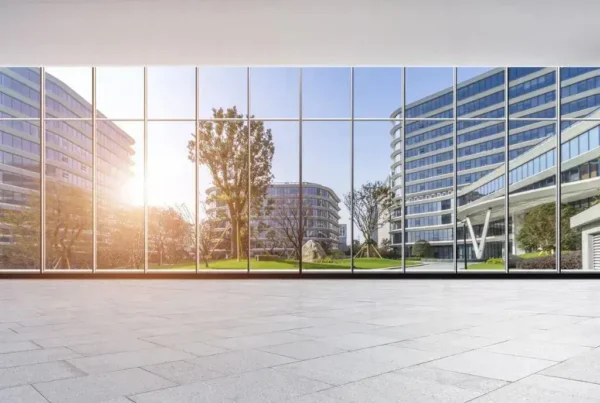According to Education Week’s school shooting tracker, there were 39 school shootings resulting in injury or death in 2024. Because these active threat scenarios are an ever-present threat to US schools, districts and administrators are increasingly looking for ways to protect students and faculty from physical harm.
One physical security measure that can greatly increase the safety and security of students and staff is bulletproof windows for schools. However, the term “bulletproof” can be misleading — no material is entirely impervious to gunfire. Instead, schools can install bullet-resistant windows designed to withstand multiple rounds and prevent forced entry, providing critical time for students and staff to seek safety.
Bullet-Resistant VS Bulletproof Windows for Schools: The Facts
It’s important to understand that the term “bulletproof,” although frequently used to refer to various products and materials, is a bit of a misnomer. There’s no such thing as any type of material that is 100% bulletproof.
In the security industry, when we talk about bulletproof windows or bulletproof anything else, what we really mean is bullet-resistant.
Bullet-resistant products and materials — that are often referred to as bulletproof — are capable of stopping one or more rounds from certain types of firearms, but it’s always possible to penetrate them with a higher caliber of bullets or a high enough volume of shots.
That being said, with modern security glazing materials and technologies, like those available from Riot Glass, it’s possible to achieve very high levels of bullet resistance and provide strong ballistic security for schools and classrooms.
How Much Do Bulletproof Windows for Schools Cost?
Traditionally, bulletproof glass has been made of multiple layers of thick, strengthened glass that are laminated together into very thick sheets that are used to make bulletproof windows.
However, traditional bulletproof glass is so thick and heavy that it’s not usually possible to use for regular architectural applications, at least not without significantly changing the surrounding framing and support structure. Not only that, but this type of bulletproof glass can be prohibitively expensive, which is why it’s mainly used for government and military applications.

With the advent of new security glazing technologies and materials, including polycarbonate and glass-clad polycarbonate security glazing, it’s now possible to create bullet-resistant windows that are much thinner and lighter than traditional ballistic glass. These types of ballistic-grade security glazing can be used for most commercial applications, from government buildings to schools.
The exact cost of bulletproof windows for schools depends on a variety of factors, including the specific composition of the bullet-resistant glazing, what ballistic rating it has, and the complexity of installation.
That being said, using polycarbonate or glass-clad polycarbonate is far more cost-effective than using traditional ballistic glass for schools. It’s a very attainable solution for schools aiming to harden their facilities against active threats as well as improve overall safety and security.
How Do Bullet-Resistant School Windows Work?
Since there’s no such thing as 100% bulletproof windows for schools or any other type of commercial facility, you may be wondering why schools should still consider them. After all, if they don’t stop all bullets, what are the benefits?
Well, the key here is something called access denial, or keeping the bad guys out. Bullet-resistant windows are one of the most effective ways schools can create access denial barriers, preventing forced entry and keeping active shooters out of classrooms and other key areas where they can do the most harm.
In many active threat scenarios, the attackers gain access to a facility by shooting out or otherwise breaking a vulnerable window or piece of door glass. Once there’s a big enough opening in a pane of glass, an attacker can simply reach through and open a door from the inside by using its emergency egress mechanism or manipulating the lock.
Even when riddled with bullets, ballistic-grade school windows don’t significantly diminish in strength or allow attackers to pass any part of their bodies through. These bullet-resistant windows remain a barrier to forced entry, keeping active threats at bay and allowing those inside to react by running, hiding, or barricading themselves inside somewhere safe. Occupants can then wait in safety for the authorities to arrive and neutralize the threat.
Depending on its specific ballistic resistance rating and the type of firearm used in an attack, bulletproof school windows can stop the first few shots fired in the direction of students and staff, potentially saving lives.
How Are Bulletproof Windows for Schools Rated?
The gold-standard rating for bullet-resistant windows and other ballistic-grade security products is the UL 752 rating system.
The UL 752 rating system classifies bullet-resistant products with a rating from 1 to 10. Each of these UL 752 levels specifies how many shots the material can resist from certain types of firearms using a specific caliber and weight of rounds.
For example, a school window with a UL 752 ballistic resistance rating of level 1 can stop 3 or more 124-grain rounds fired from a 9mm handgun. Towards the higher end of the scale, a ballistic-grade security glazing product with a UL 752 level 6 rating can stop multiple 9mm, 124-grain rounds fired from an Uzi or similar firearm.

How Can You Implement Bulletproof Windows for Schools?
When it comes to choosing the right bulletproof windows for schools, cost is a big factor, and Riot Glass ballistic-grade security glazing is the most cost-effective option for schools. Riot Glass uses specific blends of polycarbonates, acrylics, and other plastics to achieve high levels of ballistic resistance (up to a UL 752 level 8 rating), while still being very affordable.
Part of the reason why Riot Glass is so affordable is that it’s a fully retrofittable solution. Using retrofittable framing adapters, Riot Glass ballistic-grade glazing panels can be fitted on top of, behind, or in place of most existing glass surfaces. This cuts down on installation time and costs, allowing schools to get bullet-resistant school window protection in place at much lower rates than other types of security glass out there.
The unique composition of Riot Glass allows it to outlast and outperform all other similar ballistic-grade glazing on the market, making it a long-lasting solution that won’t have to be replaced or repaired any time soon. In the event that a pane of Riot Glass does get damaged, whether it’s during an active threat scenario, a break-in attempt, or an act of vandalism, it’s easy and cost-effective to replace the glazing.

Benefits of Riot Glass Bullet-Resistant Windows for Schools:
- Virtually unbreakable
- Low-profile and crystal-clear — fortify schools without making them look fortified
- Maintain natural light and visibility
- Outperform and outlast other types of ballistic-grade glazing
- Can be retrofitted into most existing windows using proprietary framing adapters
- Available with UL 752 ratings from level 1 to level 8
- Provides comprehensive protection from:
- Active threats
- Forced entry
- Burglary
- Vandalism
- Rioting and looting
- Storm damage
- Accidental impacts
The Bottom Line
Installing bullet-resistant windows is a proactive step that can make a significant difference in an active threat scenario. These security measures delay and prevent unauthorized access to schools and classrooms, providing precious time for students and staff to react and for law enforcement to respond.
When considering bullet-resistant windows for schools, it’s important to work with experienced security glazing professionals to determine the right level of protection for your needs and ensure robust active threat protection.
At Campbell, we are authorized dealers and installers of Riot Glass bulletproof windows for schools. Contact us today to get started — we’re here to help harden your school’s security and protect against a full range of threats to provide peace of mind for the entire school community.





